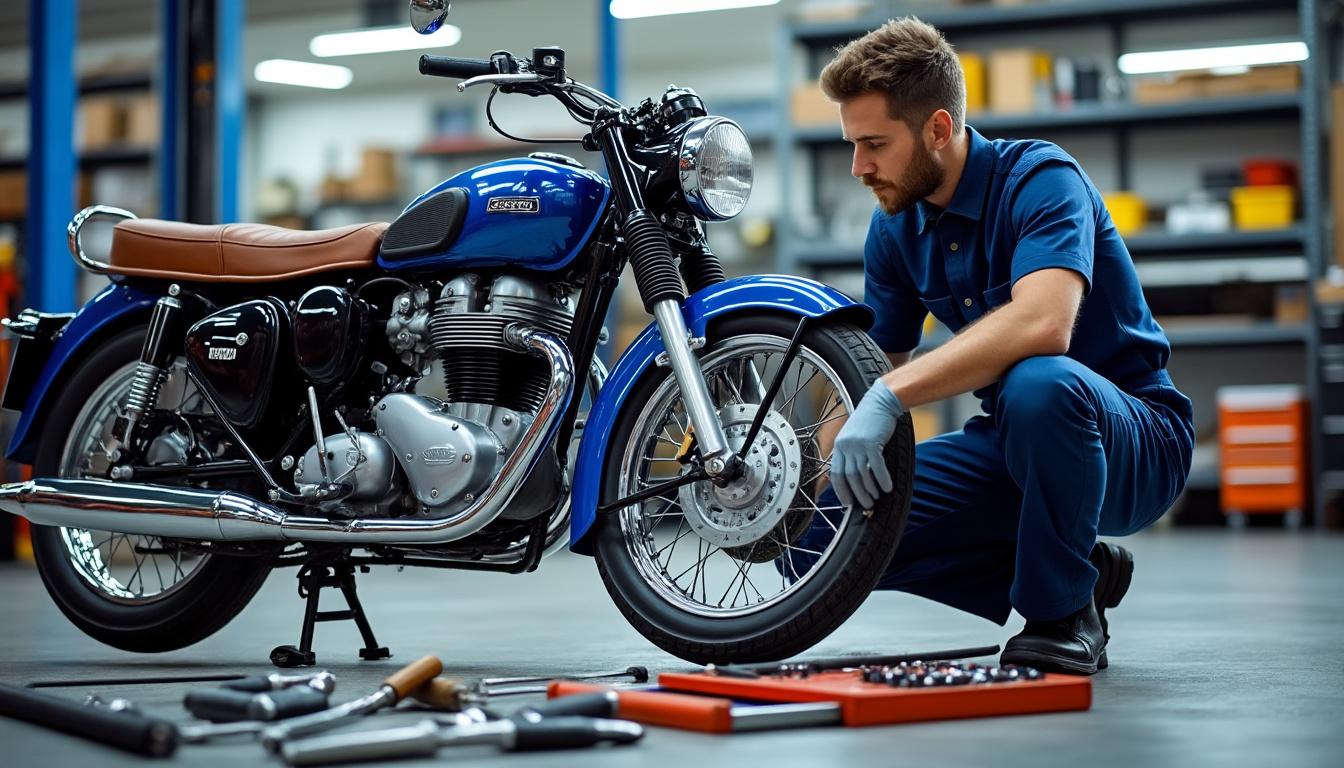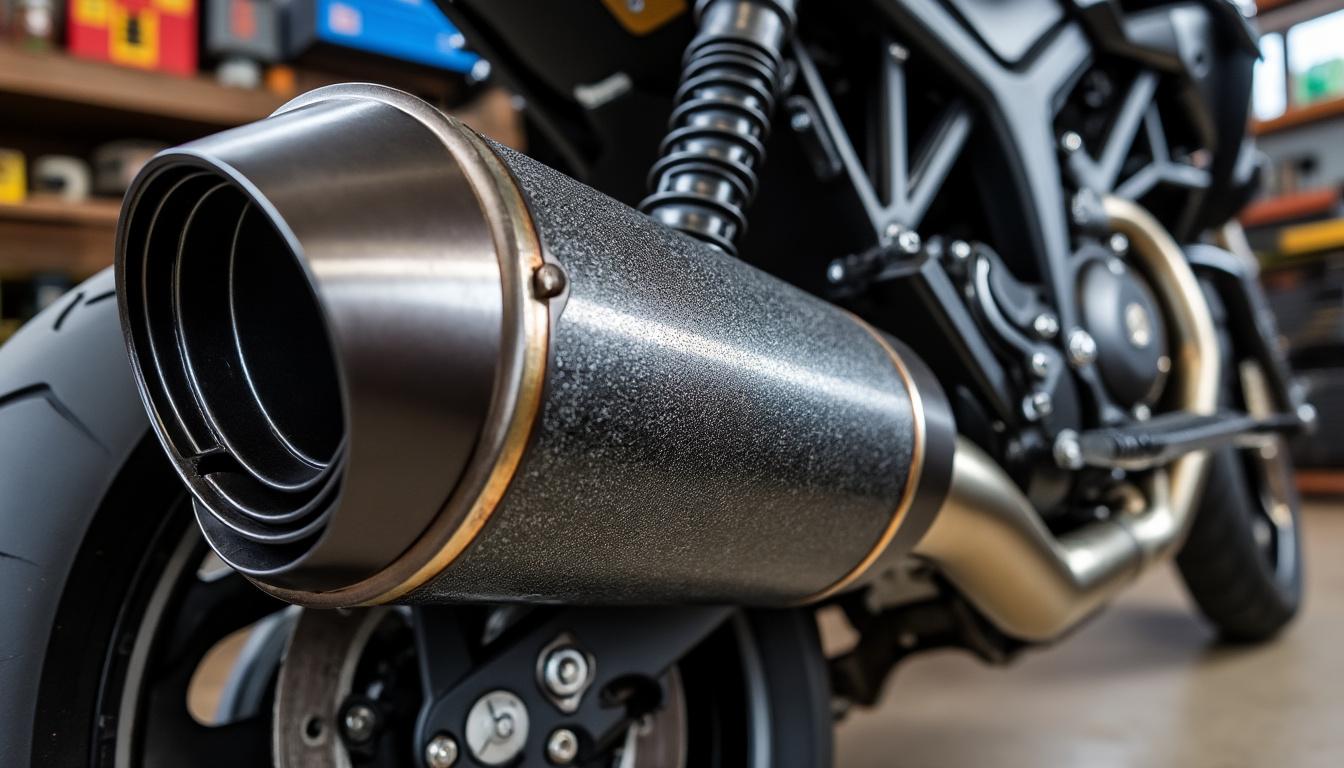Technical inspection: one year later, more than a million motorcycles have passed the examination

The technical inspection of motorized two-wheelers has sparked heated debates since its introduction on April 15, 2024. This measure, imposed on all two and three-wheeled vehicles over 50 cc, leads to an alarming observation: the re-inspection rate for motorcyclists remains significantly lower than that for cars, thereby demonstrating a more rigorous level of maintenance in this segment. While nearly one million motorcycles have been inspected, the initial assessments provide us with an insight into the changes brought about by this new regulation. What are the implications for motorcyclists, and how do these figures affect the perception of technical inspection? The stakes of safety, compliance with legislation, and the impact on warranty and insurance services are at the heart of this analysis, revealing a rapidly evolving landscape for motorcycle enthusiasts.
The motorcycle technical inspection: A regulatory measure serving safety
The technical inspection for motorcycles and scooters was established with the aim of ensuring the safety of road users. From April 15, 2024, all owners of motorcycles over 50 cc were required to submit their vehicles to periodic inspections to ensure compliance. This regulatory change has been widely debated: on one hand, it aims to reduce the number of accidents related to mechanical failures; on the other, it has been perceived as a constraint by many motorcyclists.

The one-year review after the implementation of this obligation shows that out of 1,325,116 inspections conducted, the re-inspection rate for motorcycles stands at around 10%, a figure significantly lower than that of cars. This low rate reflects more rigorous maintenance by motorcyclists. In contrast, vehicles such as microcars and mopeds show alarming re-inspection rates of 30% and 28%, respectively.
The results of the inspections and their repercussions
The initial results of the technical inspections reveal specific concerns regarding road safety. The main reasons for re-inspections are:
- Non-compliant exhaust or pollutant emissions exceeding limits
- Worn or defective tires
- Non-compliant license plates
These issues contribute to creating a potentially dangerous road environment, prompting authorities to consider new measures to guarantee safety. However, this rigor does not come without impact on the technical inspection landscape. Repair shops and dealers play a crucial role by offering appropriate maintenance services. Motorcyclists must be proactive, ensuring their vehicles are in good condition before any inspection to avoid the inconveniences of an unsuccessful control.
The evolution of the perception of technical inspection
At the heart of this debate lies an essential question: does technical inspection truly improve road safety? Some argue that the measure is redundant, while others contend that this regulatory framework imposes a level of maintenance that can reduce the number of accidents. Industry bodies, such as MotoVision, share these concerns and encourage motorcyclists to use these inspections as an opportunity to enhance the safety of their vehicles.
Discussions on this topic continue to haunt forums and motorcyclist groups, where many owners express concerns about the financial burden it represents. Indeed, the technical inspection involves additional costs that can be problematic for some motorcyclists. It is, therefore, essential that initiatives be put in place to alleviate this burden while maintaining an adequate level of safety.
| Type of Vehicle | Number of Inspections | Re-inspection Rate |
|---|---|---|
| Motorcycles (L3) | 1,030,800 | 10% |
| Microcars (L6) | 60,265 | 30% |
| Mopeds (L1) | 139,600 | 28% |
Towards a more rigorous technical inspection: adjustments to consider
In light of the initial reviews of the technical inspection, it is essential to consider the adjustments needed to maximize its effectiveness. Some voices are rising to call for a deeper evaluation of the regulation, particularly concerning the introduction of new inspections. Starting July 1, 2024, an inspection focused on motorcycle noise levels will be implemented, and this is already fueling numerous reflections. This novelty only adds another layer of complexity to the technical inspection process.

It thus becomes crucial to distinguish between the different types of motorcycles and scooters. The L classes, in particular, show significant disparities in terms of maintenance status. Motorcyclists must therefore familiarize themselves with these new requirements and prepare their vehicles accordingly. This additional responsibility will enhance driver education, crucial for defensive and safe riding. In this context, educating and raising awareness among motorcyclists about these changes is paramount.
The role of safety equipment
Alongside technical inspections, the use of safety equipment on motorcycles and scooters plays a key role. Motorcyclists must also invest in appropriate clothing and accessories: gloves, reflective clothing, and approved helmets. The combination of technical inspection with a proactive approach to safety can help reduce the number of accidents.
- Safety helmets
- Protective clothing
- Reinforced gloves
- Reflective accessories
These purchasing decisions enable motorcyclists to adequately prepare while complying with the new safety obligations. Additionally, a good motorcycle insurance policy should also be taken out to cover the various risks associated with riding a two-wheeler.
| Safety Equipment | Importance | Source |
|---|---|---|
| Helmet | Essential head protection | Source |
| Reinforced clothing | Reduction of injuries | Source |
| Gloves | Hand protection | Source |
The economic implications of technical inspection
The implementation of a technical inspection also has consequences for the economic fabric of the motorcycle-related sectors. Repair shops and dealers must adapt and provide warranty services compliant with the new standards. Consequently, they see an increase in sales of safety equipment and maintenance service options. This represents an opportunity for growth for these stakeholders but also poses a challenge in their ability to manage the increase in demand.
Furthermore, motorcyclists must also consider the cost associated with the maintenance and technical inspection of their vehicle. The latter incurs an additional expense that may deter some users, especially those who only ride occasionally. It presents a dilemma: prioritize the safety of one’s vehicle or restrict one’s travels? This questioning leads to a broader discussion about the cost of motorcycles as a mode of transportation.
The impact on industry professionals
The consequences of technical inspection are not limited to motorcycle owners. Various stakeholders in the industry are also affected. Alongside repair shops, dealers are at the forefront of this change. They must adapt to growing demands in order to offer compliant services and succeed in selling motorcycles under the regulation. Here are some identified impacts:
- Increased sales of safety equipment
- Higher demand for repairs and maintenance
- Digitalization of appointment services for inspections
It becomes vital for these stakeholders to train and adapt their businesses to meet the growing demands related to technical inspections. Staff training becomes a valuable asset to attract customers and maintain high service standards. In this regard, collaboration among various stakeholders in the industry becomes essential to ensure the sustainability of the ecosystem surrounding motorcycles.
| Industry Player | Impact of Technical Inspection | Necessary Adjustments |
|---|---|---|
| Repair Shops | Increased repairs | Staff training |
| Dealers | Increased sales | Diversification of offerings |
| Equipment Suppliers | Increased demand | Development of new products |
Source: www.lerepairedesmotards.com
Leave a Reply



Articles relatifs